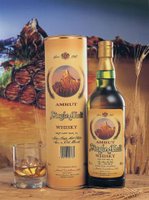Visiting Distilleries
 Distillery. How better to capture the true spirit of the nation? From mountain to glen and island to lowland, you’ll find beautifully sited distilleries still dispensing individual charm, history and the local ’water of life’. All waiting to be discovered, wherever you are in Scotland.
Distillery. How better to capture the true spirit of the nation? From mountain to glen and island to lowland, you’ll find beautifully sited distilleries still dispensing individual charm, history and the local ’water of life’. All waiting to be discovered, wherever you are in Scotland. So if you are ever in Scotland and wish to visit the distilleries make sure you have a copy of Visiting Distilleries, the book which helps whisky enthusiasts learn more about the malt whisky distilleries in Scotland and Northern Ireland which actively welcome visitors. Furthermore, the book is a publication of a journey to 40 malt distilleries, one cooperage and two other related facilities with critical and objective analysis of what is on offer for the visitor.

